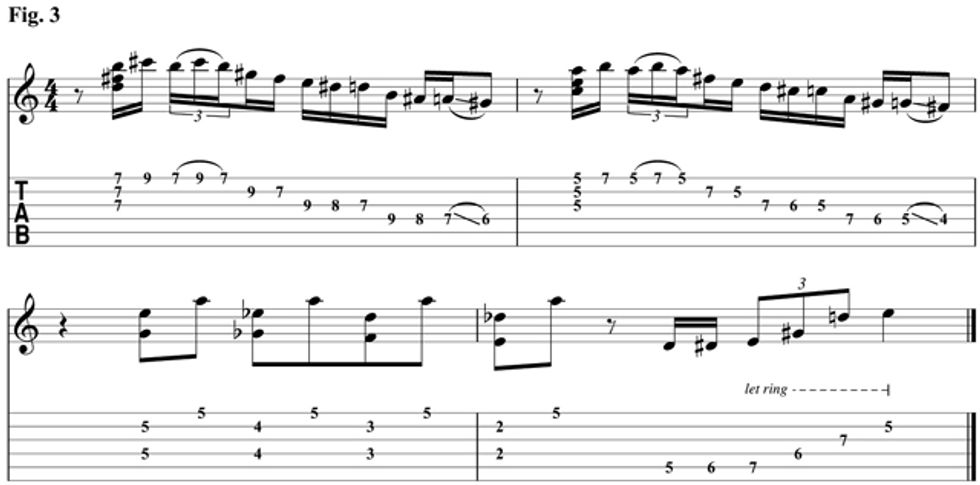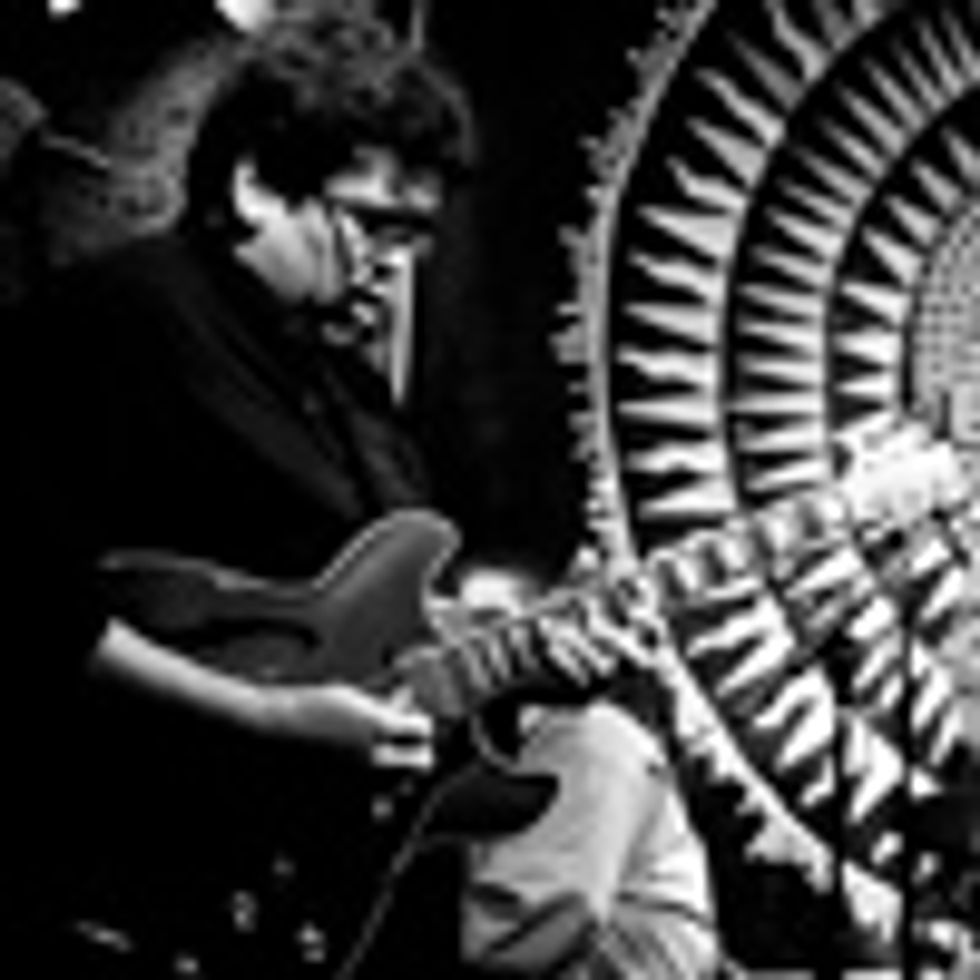Several turnaround phrases in the style of Eric Clapton, B.B. King and Ronnie Earl.
| Chops: Intermediate Theory: Intermediate Lesson Overview: • Learn several turnaround phrases in the style of Eric Clapton, B.B. King and Ronnie Earl. • Target specific notes in a chord. • Combine the minor and major pentatonic scales. |
| Print it! Click here to download a high-resolution, printable PDF of the notation. |
Fig. 1 is in the style of Eric Clapton, but I think you’ll be able to hear a little Freddie King in this lick as well. King was a big influence on Clapton’s playing—check out “Hideaway” from the John Mayall and the Bluesbreakers Featuring Eric Clapton album. One idea that has worked its way down the blues family tree is combining both major and minor pentatonic scales.
We begin the lick squarely in A major pentatonic (A–B–C#–E–F#) before moving into minor pentatonic in the second measure. We touch on the major 3rd (C#) in the third measure. In this case, the C# is being added to the A minor pentatonic scale (A–C–D–E–G) as a way to outline the notes of an A7 chord. In the final measure, I add another common element by ending on the root of the V chord. Both King and Clapton used this to firmly establish the end of the turnaround.
or download example audio

For Fig. 2 we move on to the style of B.B. King and check out what he might play over a slow blues. Similar to the previous example, we also hit on the C# in the first measure to establish the tonality, but in a different way. Here, we are thinking of it as a 13th of the V chord. It goes by pretty fast but still has a major impact on the overall vibe of the lick. A simple, but effective element of the lick happens in the second measure. Over the IV chord (D7) King uses a descending sequence with the notes of the A minor pentatonic scale. The final two measures are based in fifth position with a return to using the 13th in the last measure.
or download example audio

In Fig. 3 we have a turnaround based on the jazz-influenced style of Ronnie Earl. T-Bone Walker was a huge influence on Earl as this example will demonstrate. This lick moves from the V chord (E9) down to the IV chord (D9) with some chromatic runs thrown in. It starts with a B minor triad (B–D–F#), which functions as the top three notes of an E9 chord then adds both the 13th (C#) and the 9th (F#). It descends chromatically down first to the b7th and then again chromatically down to the third of D9 (F#). Following the chord progression, we will move everything down a whole step and do exactly the same thing. In the last two measures we have just a traditional chromatic descending turn around lick before landing on the V chord.
or download example audio

In order to get the most mileage out of this licks—and to be prepared when confronted with a surprise on the gig or at the next jam session—take them through other keys. Soon you will be developing your own ideas from these tried and true phrases.
 Dennis McCumber has been a guitar instructor and performer
for more than 20 years. He holds a Bachelor’s degree in music
education from The College of Saint Rose.
Dennis performs
regularly in the New York City area with various rock, blues, and funk bands, and occasionally as a classical soloist.
In addition to performing, Dennis has been a middle school
music teacher in the Bronx for the past 12 years. While
teaching in the Bronx, he was given a guitar lab by VH1
Save the Music and a keyboard lab from the radio station
Hot97 Hip Hop Symphony. Dennis has been an instructor at
the National Guitar Workshop since 1996, where he teaches
Blues, Funk, and Rock. Find out more at dennismccumber.com.
Dennis McCumber has been a guitar instructor and performer
for more than 20 years. He holds a Bachelor’s degree in music
education from The College of Saint Rose.
Dennis performs
regularly in the New York City area with various rock, blues, and funk bands, and occasionally as a classical soloist.
In addition to performing, Dennis has been a middle school
music teacher in the Bronx for the past 12 years. While
teaching in the Bronx, he was given a guitar lab by VH1
Save the Music and a keyboard lab from the radio station
Hot97 Hip Hop Symphony. Dennis has been an instructor at
the National Guitar Workshop since 1996, where he teaches
Blues, Funk, and Rock. Find out more at dennismccumber.com.From Your Site Articles
